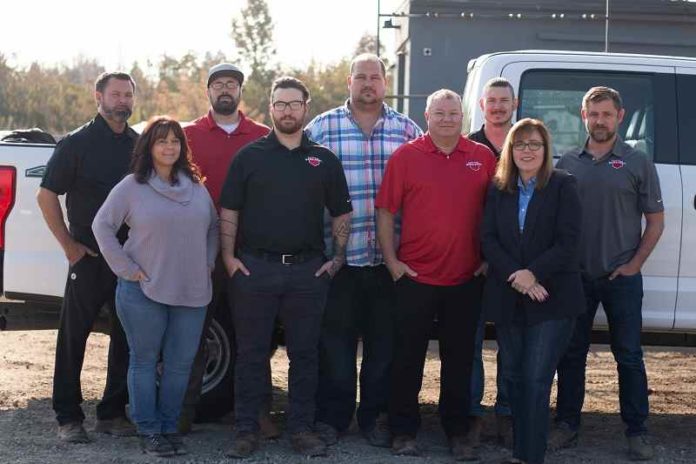In Ohio, construction companies were some of the first businesses given clearance to re-open, with the official re-opening beginning on May 4. When businesses got the green light from the state, they could physically open, but that didn’t mean every business was ready to open safely.
At Dura-Seal, being at the front end of re-opening meant we would lose the advantage of learning from missteps other businesses took as they re-opened ahead of us. But, through navigating the uncertainty of this process, I learned five important lessons that will hopefully help guide other business leaders as they create their re-opening plans.
- Business development is going to look different. A number of projects and contracts will likely be canceled as companies try to be conservative with 2020 budgets. Keep an open mind and consider audiences you may not have tapped into in the past for business development meetings. You may also need to get creative when it comes to new company service offerings for the year.
As a business leader, being understanding about economic pressures can go a long way. Some companies may need to postpone their projects, so be prepared to navigate that and don’t forget to follow up with them later. Other companies might have to cut back on work but will still need some sort of support, and in those cases, being flexible – perhaps by offering a lower service offering or a discounted rate – can have long-term, mutual benefits for all parties involved.
- Get creative to try to make meetings interactive and maintain confidentiality. With almost all meetings taking place virtually over the past couple months, navigating the shift from virtual back to in-person meetings will be tricky. Being at the front end of re-opening meant that many of our clients and partners were still working remotely, so creating clear guidelines about which meetings should be virtual, in-person or held via phone has proven helpful.
Maintaining confidentially in meetings can also be a challenge. For example, when navigating a recent bidding process, we were among a number of contractors who disclosed bids separately ahead of a live virtual meeting. The client then conducted the large meeting with all parties to reveal who won the project.
- Be mindful of new hires’ perspectives. Onboarding new employees has certainly become a challenge during our re-opening process. Virtual communication has its pitfalls, but it’s easier when you’ve worked with someone prior to COVID-19 and have had the opportunity to formulate a bond. For new employees hired amid the pandemic, the chance to meet the team and begin building a relationship with other staff members is not as easy.
Compensation for entry positions may also be a challenge in the short-term. Some entry level employees that were furloughed or laid off may be making more money on unemployment than they were previously making in their entry level roles. As companies are looking to budget for hiring, it is important to be mindful of helping entry level hires maintain their financial stability. With budget challenges of your own, this also may mean delaying hiring new employees until you can afford to compensate them appropriately.
- Establish a uniform safety protocol. Upon re-opening, many business leaders and officials are “strongly encouraging” everyone to wear a mask, including workers at job sites. As an employer, you have to be very clear about your expectations for safety. In our experience, only a handful of our staff are diligent mask-wearers. Many of them now take them off after our daily staff huddles or stopped wearing them altogether after a few days, which created some confusion among staff members.
It’s also important to be clear about social distancing protocol. Think of how your team should approach meetings – consider meeting outside in big circles, standing at least 6 feet apart, for morning huddles or in conference rooms with only three or four people instead of larger groups. Sanitizing the office should also be prioritized, and business leaders should clearly communicate what that process looks like to employees and who is responsible for spraying down and sanitizing the office space and equipment.
- Overcommunicate to make sure your employees feel safe. Implementing safety protocols early and clearly communicating these changes with employees will help ease anxieties about returning to work. Whether it is providing protective supplies like masks and hand sanitizer for all employees or being diligent about workplace cleaning procedures, clear communication about how your business is keeping employees safe is key.
Above all else, be understanding. Some employees may have underlying health issues or may be caretakers for someone else who does, so being sensitive to what each employee needs and working out a solution with each individual to protect those needs during this unprecedented time will go a long way. Some employees may not feel safe returning to work until the threat of COVID-19 has subsided in your area.
We’re all learning how to be flexible and compassionate as we try to maneuver what re-opening the U.S. economy looks like. If you are a business leader, it’s best to be an empathetic one right now. From your employees to your clients, you’ll see a more positive response if you try to put yourself in their shoes while making business decisions.
Bob Lester is president and CEO of Dura-Seal, a sealcoating, asphalt, and concrete services company. He has worked in the paving industry for over 20 years, leading two buyouts, an acquisition, and the sale of an equipment manufacturing company at Dura-Seal. Prior to joining the company, Bob studied business finance at Otterbein University.
Photo Courtesy: Madeline Turner Photography







